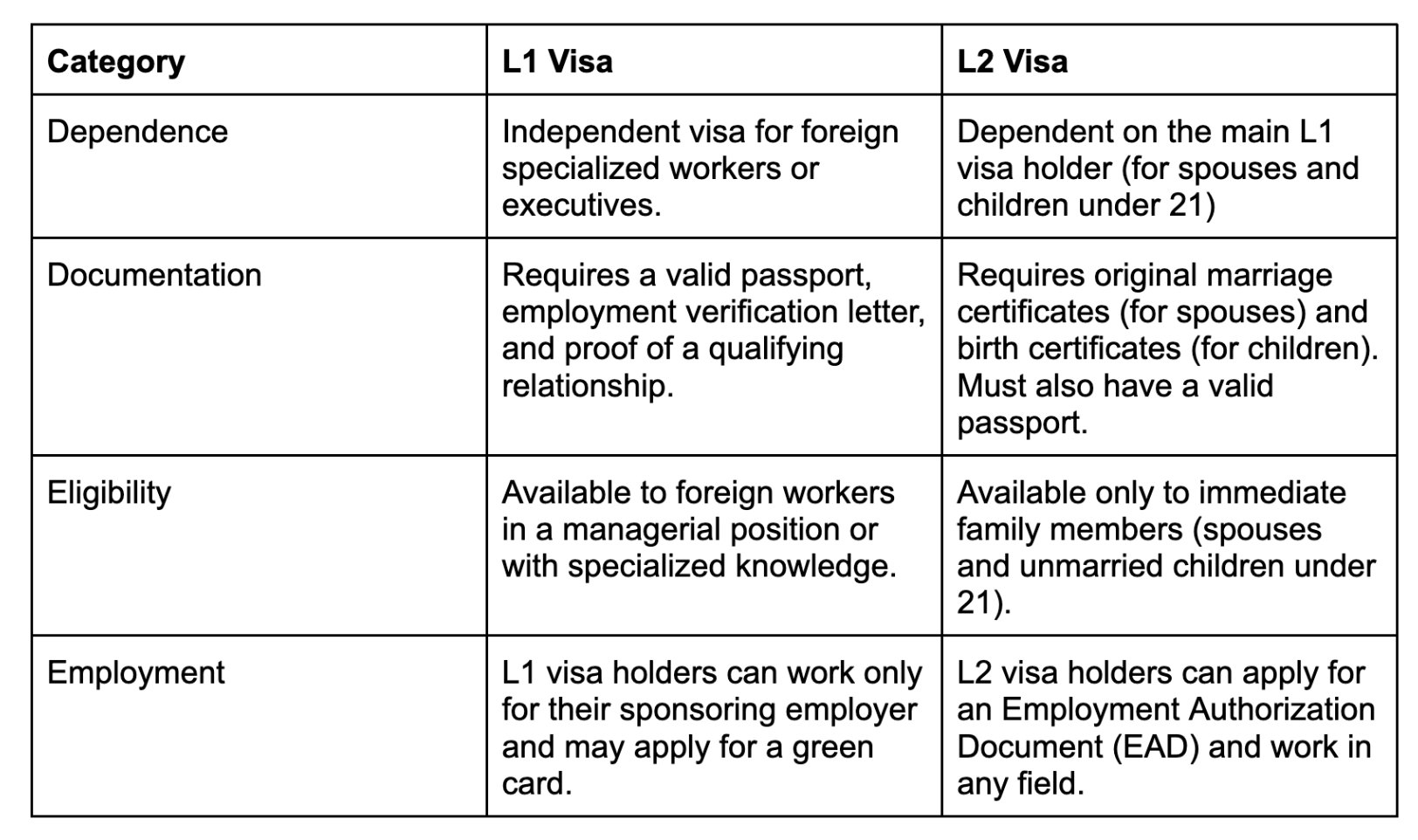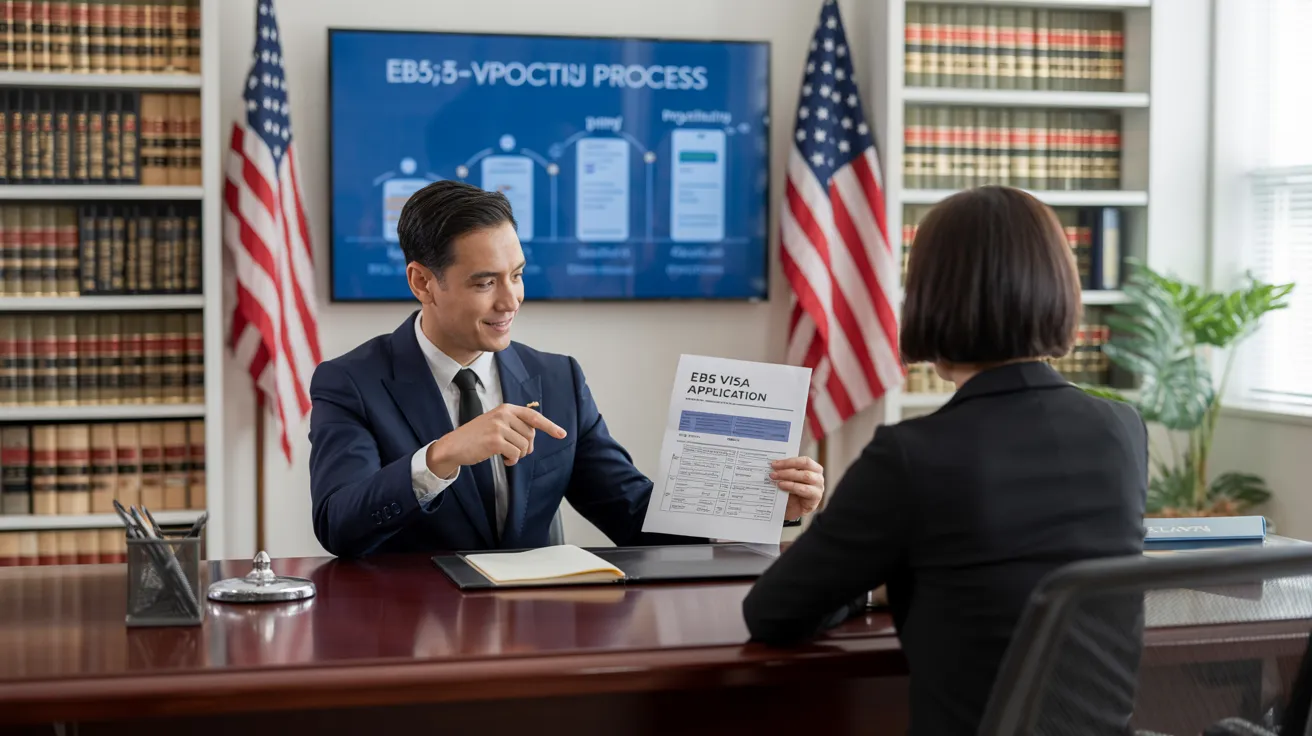Some Known Questions About L1 Visa.
Table of ContentsThe Definitive Guide for L1 Visa3 Easy Facts About L1 Visa DescribedSome Known Factual Statements About L1 Visa The 15-Second Trick For L1 VisaRumored Buzz on L1 VisaThings about L1 Visa
Readily Available from ProQuest Dissertations & Theses Worldwide; Social Science Costs Collection. DHS Office of the Examiner General. Gotten 2023-03-26.
United State Division of State. Obtained 2023-02-08. Tamen, Joan Fleischer (August 10, 2013).
L1 Visa Can Be Fun For Everyone
In order to be qualified for the L-1 visa, the international firm abroad where the Recipient was employed and the united state company must have a qualifying partnership at the time of the transfer. The different kinds of qualifying relationships are: 1. Parent-Subsidiary: The Parent indicates a company, company, or other lawful entity which has subsidiaries that it has and regulates."Subsidiary" indicates a company, firm, or other lawful entity of which a parent possesses, straight or indirectly, more than 50% of the entity, OR has much less than 50% but has monitoring control of the entity.
Example 1: Business A is incorporated in France and employs the Recipient. Firm B is incorporated in the U.S. and desires to petition the Recipient. Firm A has 100% of the shares of Firm B.Company A is the Parent and Firm B is a subsidiary. There is a certifying partnership between the two business and Firm B should be able to sponsor the Beneficiary.
Business An owns 40% of Firm B. The remaining 60% is possessed and managed by Business C, which has no relation to Company A.Since Company A and B do not have a parent-subsidiary relationship, Business A can not sponsor the Beneficiary for L-1.
Firm A has 40% of Firm B. The staying 60% is owned by Business C, which has no connection to Business A. Nonetheless, Business A, by official contract, controls and complete handles Firm B.Since Business A possesses less than 50% of Firm B but takes care of and manages the firm, there is a qualifying parent-subsidiary relationship and Business A can fund the Beneficiary for L-1.
Excitement About L1 Visa
Affiliate: An affiliate is 1 of 2 subsidiaries thar are both had and controlled by the exact same moms and dad or individual, or possessed and managed by the same team of individuals, in primarily the same ratios. a. Example 1: Firm A is integrated in Ghana and employs the Beneficiary. Company B is incorporated in the U.S.
Company C, also incorporated in Ghana, owns 100% of Company A and 100% of Company B.Therefore, Company A and Company B are "affiliates" or sister companies and a qualifying connection exists between the two firms. Firm B should be able to sponsor the Beneficiary. b. Example 2: Firm A is learn more included in the united state
Firm A is 60% owned by Mrs. Smith, 20% possessed by Mr. Doe, and 20% owned by Ms. Brown. Company B is incorporated in Colombia and currently employs the Beneficiary. Company B is 65% owned by Mrs. Smith, L1 Visa attorney 15% owned by Mr. Doe, and 20% owned by Ms. Brown. Company A and Company B are affiliates and have a qualifying relationship in two different means: Mrs.
The L-1 visa is an employment-based visa category developed by Congress in 1970, allowing multinational business to move their supervisors, execs, or vital employees to their United state procedures. It is commonly referred to as the intracompany transferee visa.

In addition, the recipient needs to have operated in a managerial, executive, or specialized employee placement for one year within the 3 years coming before the L-1A application in the international firm. For brand-new workplace applications, foreign employment must have been in a supervisory or executive ability if the recipient is involving the USA to function as a manager or executive.
4 Easy Facts About L1 Visa Explained

If given for an U.S. company operational for greater than one year, the preliminary L-1B visa is for as much as three years and can be extended for an additional two years (L1 Visa). Alternatively, if the united state company is recently developed or has actually been operational for less than one year, the first L-1B visa is released for one year, with extensions offered in two-year increments
The L-1 visa is an employment-based visa category established by Congress in 1970, enabling international business to move their supervisors, execs, or crucial employees to their United state procedures. It is generally referred to as the intracompany transferee visa.
What Does L1 Visa Do?
Furthermore, the recipient needs to have operated in a supervisory, exec, or specialized staff member placement for one year within the 3 years coming before the L-1A application in the international firm. For new office applications, international work has to have been in a contact us managerial or executive capacity if the recipient is concerning the USA to function as a manager or exec.
for as much as seven years to oversee the procedures of the U.S. affiliate as an exec or manager. If issued for a united state business that has been operational for even more than one year, the L-1A visa is originally provided for approximately 3 years and can be extended in two-year increments.
If granted for an U.S. firm operational for more than one year, the initial L-1B visa is for approximately 3 years and can be prolonged for an additional 2 years. On the other hand, if the U.S. firm is newly established or has been operational for much less than one year, the first L-1B visa is issued for one year, with extensions offered in two-year increments.